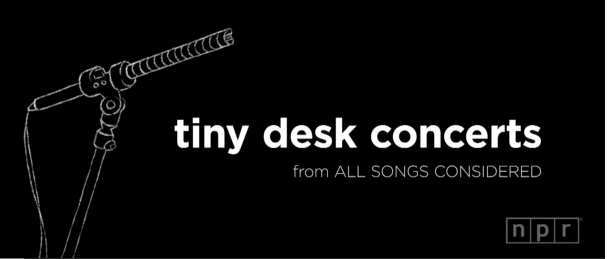
Tiny Experiences, Big Impact
[fblike]
Today, in one of our Creativity Labs, a short inspiration led to a tiny experiment and became a big success!
[col2]
Students, ages 6-9, watched two sections of So Percussion‘s Tiny Desk Concert at NPR (seen here). We’ve been exploring body percussion, found object music and ac cappella but usually in a loud, energetic and sometimes ridiculously boisterous way. (Imagine kids jumping from table to table in rhythm while others are shutting books and tapping pencils in their own musical compositions.)
Today I wanted to play with restrictions, intimacy and restraint. So we took inspiration from NPR’s Tiny Desk Concerts. I briefly explained that the artists create on traditional, large percussive instruments like marimbas, full drum kits, vibraphones. But in this video they took the challenge of performing their work on the tiniest percussive instruments they could fit in the space, including found objects like staplers and coffee mugs.[/col2]
.
[youtube width=”300″ height=”250″ video_id=”3EDGt5l5_20″]
.
.
After two minutes of the first piece, Jason Treuting’s “Life is [ ]” we moved to the last piece (13:20 on the video) to view their found object interpretation of John Cage’s “Living Room Music: To Begin”.
OUR EXPERIMENT:
- What music can you discover and create in this room (their library) that only you (or your partners if collaborators) can hear?
- How tiny can you make this moment?
- What instruments work best in tiny songs?
After 10-15 minutes exploration, they crafted a short percussive piece in the nooks and crannies of the library. We put down our instruments on their new stage and gathered together in the center of the room. We took a deep breath together and took in the silence. Then, as a tight cluster, we moved from one performance space to the next. The music was very tiny. Some piece required us to lean in so tightly around the performer you’d think we were looking for an ant. We gave tiny applause. No one spoke.
There were tiny songs made from eraser tips, fluttering bookmarks, hairpins clinking with screws on a chair…
Tiny songs were experience under a table, in a corner of the room most never noticed and in a book held secretively close to the performer…
 The children, normally off-the-charts loud and energetic, were focused and leaned in. They were engaged and gentle. They were respectful and joyful. It was intimate and thoughtful.
The children, normally off-the-charts loud and energetic, were focused and leaned in. They were engaged and gentle. They were respectful and joyful. It was intimate and thoughtful.
We all have these moments. We all have the capacity. It’s in the play, the challenge and the inspiration that we discover.
Thank you, So Percussion. Thank you, NPR. Thank you, children.